Knowing some top tips for navigation are always helpful when out hiking. Although the prevalence of GPS-capable smartphones is a massive leap forward for hikers and hillwalkers in recent years, you should never to allow yourself to become too complacent. As I’ve said before, GPS is great, but at the end of the day you must at least know the basics of good old map and compass navigation in case you ever need to fall back on these basic tenets.
Thankfully you can check out our Hillwalk Guides on how to use a compass and how to read a map, the first two basic skills you’ll need to learn and practice before moving on further and advancing your navigational skills:
How to Read a Map:
How to Use a Compass:
However, having said that, there’s a lot more to it than just reading a map and understanding how to use and follow a compass bearing properly. This applies to even just the very basics. One of the most fundamental skills of effective navigation is actually being able to read the surrounding environment at the same time as your map. As a former Army Officer, my personal advice is to form at least a rudimentary fusion between reading both the map and what you physical see in the landscapes around you. Practicing this will improve your navigational skills massively over time, as it will improve your overall situational awareness on the ground.
Here are my top five tips on how to become a better navigator when moving through nature as a hiker or hillwalker.
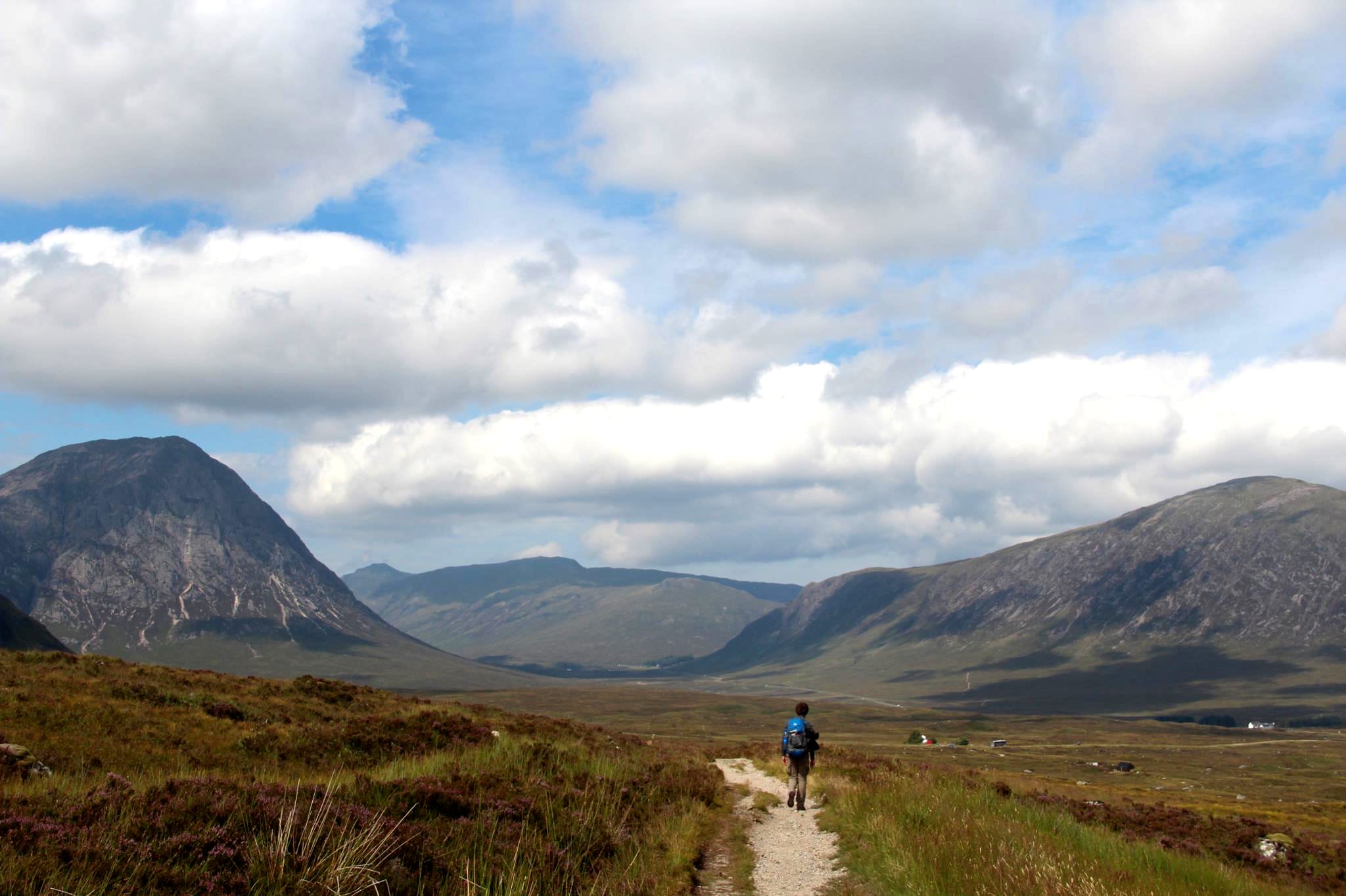
Looking for your next hiking adventure – check out hillwalktours.com
Pacing and Use of Pacing Aids
If you’re hiking a route which is not clearly waymarked in a manner that accurately informs you of your distance covered, it’s a good idea to have at least one pacer in your group. Before beginning the hike, the pacer should measure out how many steps they take on average to cover a known 100 metre distance. This should be done on flat ground as well as when travelling steeply up or down, because your number of steps per 100 metres will change for different gradients. With practice and experience you’ll also learn how many steps you need to cover 100 metres of well-worn track versus overgrown, rocky or otherwise hard-going terrain. There can also be differences depending on the weather and how heavy your backpack is, and even what type of footwear you have on.
Accurately pacing out your journey will allow you to navigate effectively because it will aid in knowing approximately how far you’ve travelled along your map. When measuring the distance on a map, a useful tool for figuring out the distances of curved tracks and roads is a simple piece of string or shoelace. You can also make pen markings on a piece of paper, moving it along and turning it as you mark off the distance to be travelled.
When I refer to ‘pacing aids’ in this section’s title, I’m talking about something that helps you keep from forgetting how many steps you’ve done. I know that back in the Army it was difficult to keep from losing my count when I was up at step number 963 while also trying to keep an eye out through the bushland around me. The same goes nowadays for keeping track of my pace count while being distracted by the beautiful views around me while hiking in Ireland. So, if it takes me about 1,300 steps to travel one kilometre on average ground, then I will move a pebble from one pocket to another every 130 steps. Once I’ve moved all ten pebbles I can start the process again and tick off one kilometre of ground covered. Other suitable aids include small, broken up pieces of a stick or twigs, as well as ready-made pace counters in the form of beads tightly strung onto a piece of string or rope which you then shift back and forth.
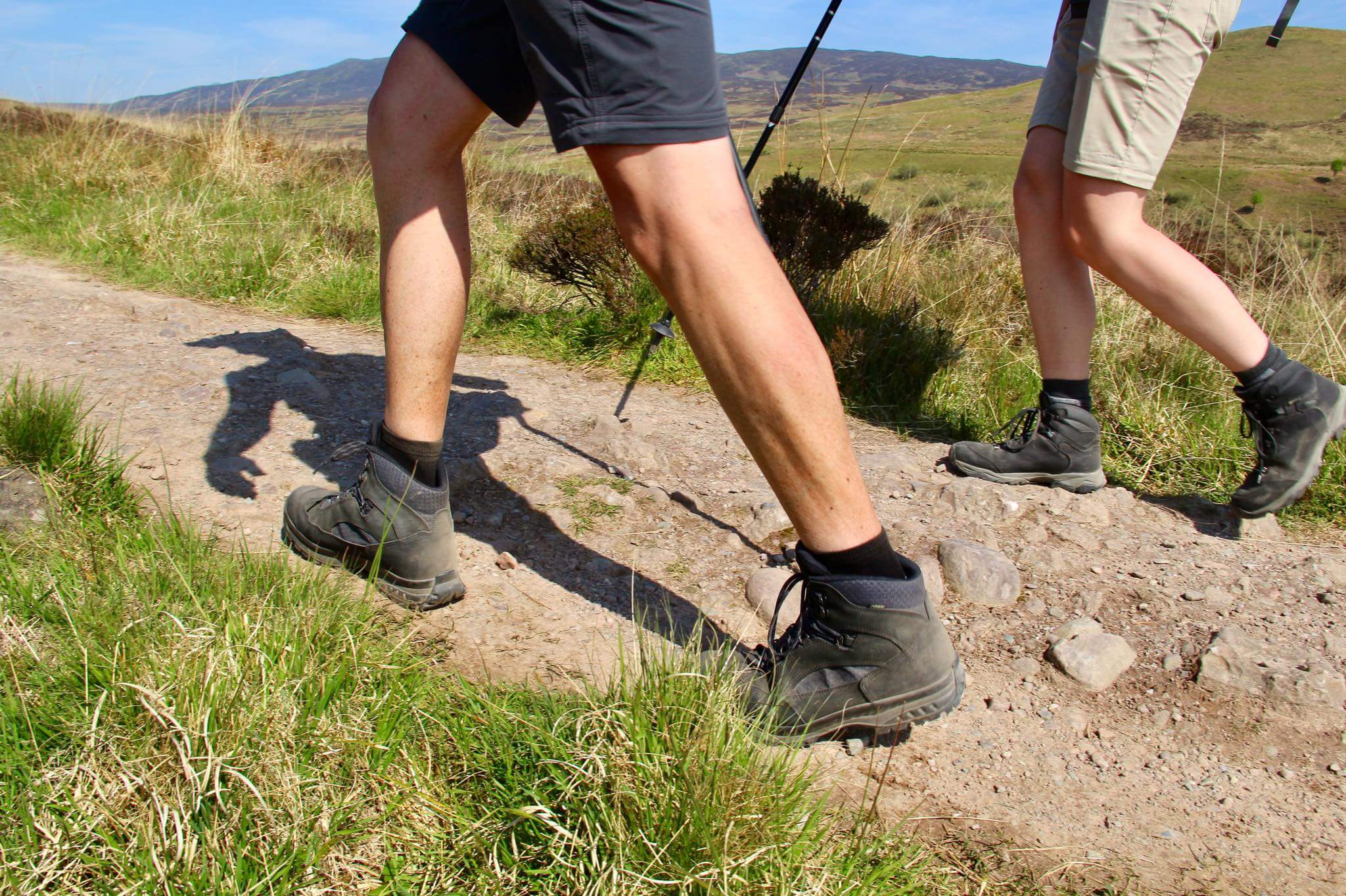
Judging Distances
An important skill when navigating is being able to closely judge your distance to other objects and notable landscape features around you. This will help you figure out where you are (when triangulating your position, for example) and how far away you are from your next destination. This will also help you know how much time you have left until your destination, which is useful to know in terms of planning rest stops and when dealing with inclement weather.
When judging distances, it’s also useful to remember the concept of perspective. What I mean here is that when looking into the distance, the other notable objects around you will appear to become closer together the further away they are. It’s important to not be tricked here, for example by distant mountain peaks which to your own eyes may look quite close together, but which are in actual fact many kilometres apart in reality and on paper (i.e., on your map). This concept is even more evident when looking through a telephoto lens on your camera (known as telephoto compression to photographers) and when viewing that same mountain range through a heavily zoomed in binocular.
One trick for effectively judging distances is to have some reference distances in mind. For example, if you know how individual trees or a patch of pine forest look at various distances, this can come in handy. Some alternatives used by colleagues of mine were to think in terms of the number of football field lengths or even urban and suburban city and town blocks.
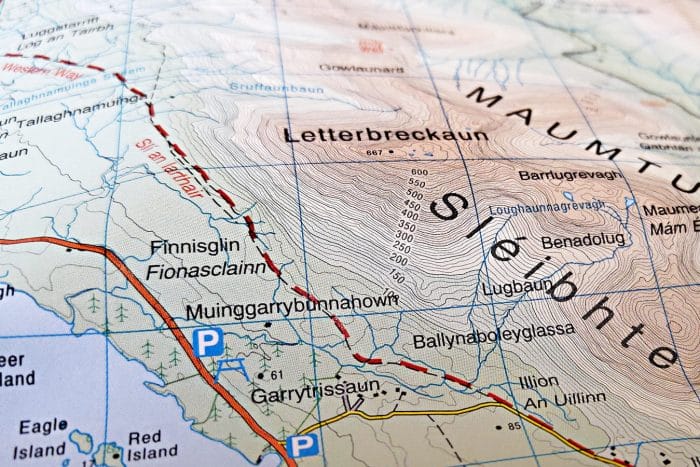
Use a piece of string to measure curved distances on a map. – Photo credit www.nicholasgrundy.com
Learn to Read Satellite Imagery
Using a GPS (either a standalone device or as part of your smartphone) isn’t always as simple as looking at the blue dot in GoogleMaps and seeing which direction you’re going. Yet another highly useful skill is being able to actually switch your background map view over to satellite mode and then understanding what on Earth (literally, ‘on Earth’) is going on. This is especially true when you are in an area away from any clearly marked roads or tracks on other non-satellite backgrounds and maps. Once you learn how to read the shadows cast by high ground, ridges, mountains, tall trees, etc., you’ll be able to better utilise the amazing GPS technology we can also thank satellites for.
Once you get a bit of a knack for reading satellite imagery it is quite amazing what you can pick up on the ground, especially anything man made such as fence lines, tracks, quarries, dams, and even sheep tracks. What’s more, the satellite imagery available to the general public is being enhanced all the time. Just last year much of the imagery in GoogleMaps covering the West of Ireland was updated and the quality and resolution is absolutely incredible now. Apple Maps is likewise leaps and bounds ahead of where it was just a number of years ago. Remember back when Google Earth first came out? The difference in the year 2020 is astounding.
Learn to Read the Ground
Far and away my greatest tip to you as a navigator is to learn how to properly orientate yourself and your map to the environment surrounding you. With time and practice this means you’ll be able to regularly maintain your awareness of where you have moved to based on your surrounds. As such, when you pass by a re-entrant on your map, you’ll be able to recognise this in the form of the descending creek line to your side in real life. As you emerge into a meadow, enter a patch of woods, traverse a saddle between two hills, etc., you’ll all the while be able to follow along with the changes on both your map and in the landscape around you. Therefore you’ll constantly have a good level of situational awareness in terms of keeping close track of whether you are in fact where you think you are and should be on the map.
This is of course a skill which is paramount when it comes to achieving the number one purpose of navigation in the first place: not getting lost! Or as I’ve heard it called in the Army, “geographically challenged.” But, having said that, don’t be afraid to become a bit lost, as it inevitably happens to all of us. And often the best and only way to truly learn something in life is to fail at it first. However just make sure you don’t fail so badly that you become irreparably lost and in need of a major rescue operation. Not only is this highly embarrassing, but should the weather turn bad or the sun go down (especially without the moon coming up), this can become a rather dangerous predicament in a hurry.
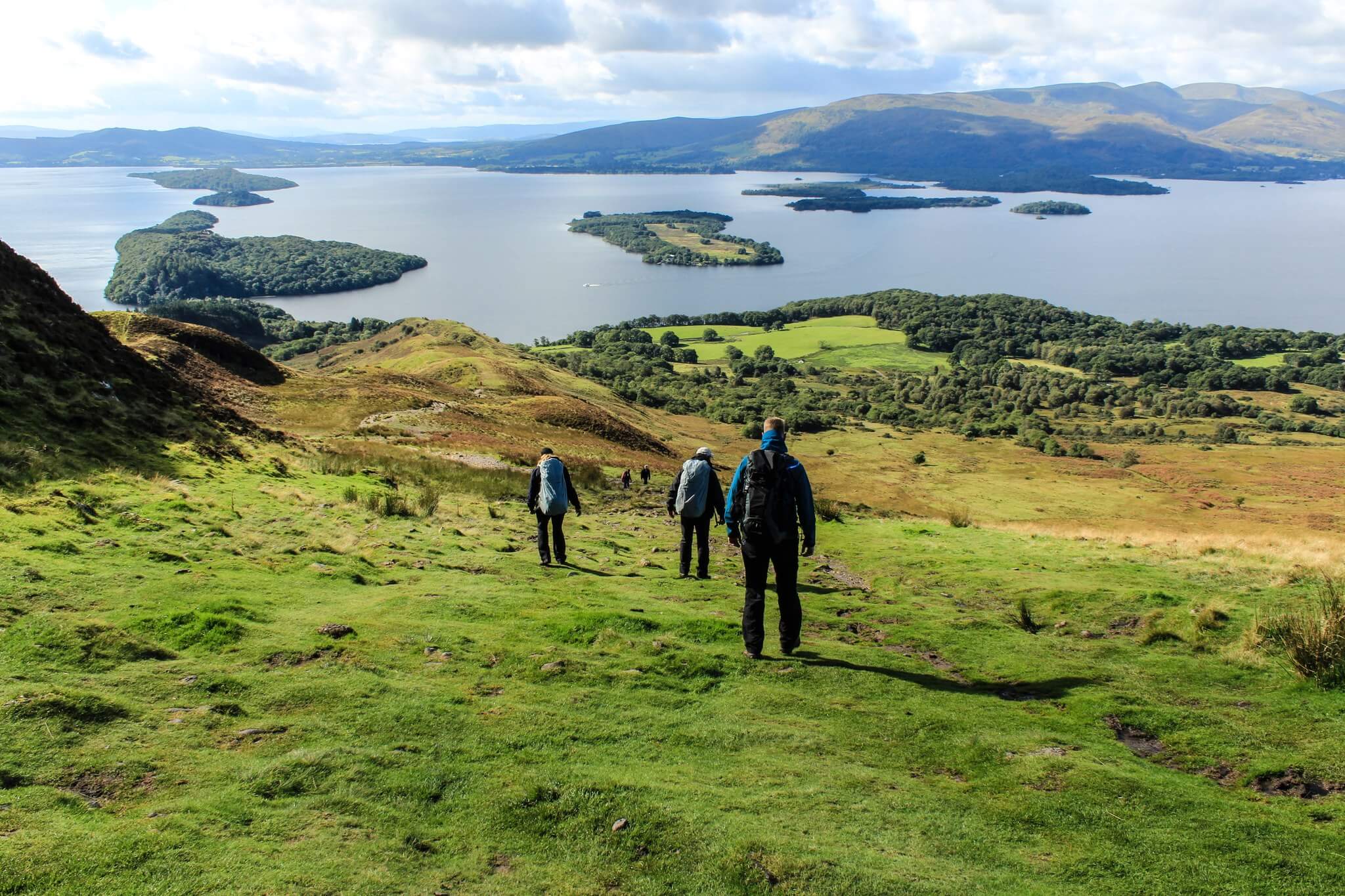
Triangulate your Location
In case you become somewhat lost, or if you simply wish to know more precisely where you currently are on the map, being able to accurately triangulate your position is another useful skill. If you haven’t done so before, when you’re next out on a longer distance hike, practice figuring out your position based off at least three prominent landmarks around you. At first you’ll need to take a compass bearing toward these objects and transpose these onto your map to create a triangle of accuracy centred on your position. However, with time and practice you will be able to quite closely determine your position merely by viewing the land around you and taking in the relation of various features compared to one another and compared to where you are standing.
The best features to use around you include both natural and manmade items. For example: radio masts, mountain peaks, spot heights, road intersections, clearly delineated forests and pine plantations, lakes, dams, buildings, and so on.
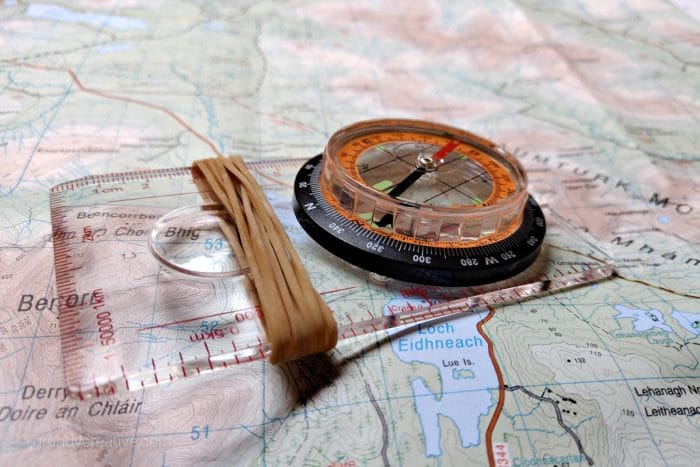
Use your compass and map to triangulate your location. – Photo credit www.nicholasgrundy.com
Once you practice these tips and more, you’ll eventually get to a point where navigation comes second nature to you. One day you’ll suddenly find yourself no longer needing to think about it or exert any mental effort towards the act of navigating. And with better and better GPS-capable devices by your side it is becoming more and more difficult to actually get lost with this amazing aid up your sleeve. Just make sure to not become too reliant on it in case your connection drops out or you completely run out of battery. And don’t always trust your GPS one hundred percent! If you haven’t heard this one before, there was once a car load of tourists in Australia who blindly followed and trusted there in-car sat-nav system. What did they do in the end? Well, in order to drive to an island which had no bridge to it, they followed the blue line on the screen and drove further and further straight down a beach and into the ocean until the water was well and truly coming up past their ankles inside the vehicle!
We hope that you enjoyed this guide to tips for navigation while hiking. If you’d like any information on taking a hiking tour in Ireland, Scotland, England, Wales or on The Camino, check out our selection of self-guided hiking tours.


